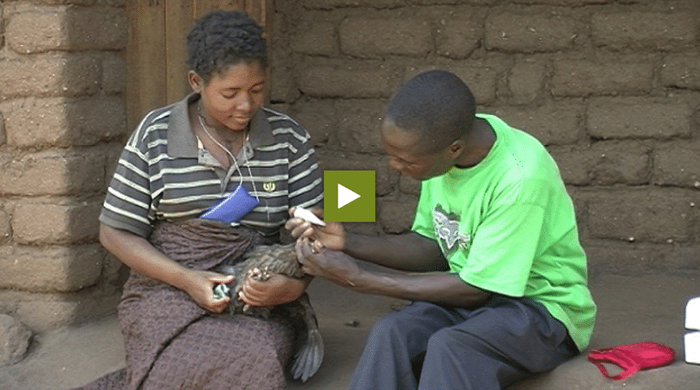Chicken provide meat, egg, income and manure for many smallholder farmers. Chicken however, are prone to many diseases. Newcastle disease is the biggest killer of poultry worldwide. Once the chicken is infected with the virus, there is no treatment and it can wipe out an entire flock in a village.
Symptoms
If the virus affects the brain the chicken will appear completely paralysed, twisted head and neck, dull and depressed. They had green watery diarrhoea that stick on feathers; swelling beneath the wings and sneezing. Newcastle disease is caused by a virus and transmitted by direct contact with secretions from infected chickens or by contaminated feed, water and human clothing.
Prevention & control
Newcastle disease can be prevented by sanitary measures such as isolation from sick chicken, slaughtering and burying the infected chickens to prevent spreading of the disease. Isolate and quarantine new chicken from different regions.
There is no treatment for Newcastle disease
Vaccination
Vaccines are the best prevention method since there is no cure of the disease. Vaccines should be refrigerated between 2°C –8°C. When going to the field, the vaccine should be carries with ice inside a small container or wrapped on a wet cloth inside the bucket if the temperatures are not too high.
La Sota Vaccine: One bottle of La Sota vaccine is diluted with 5 litres of water and should be given to the chickens within 2 hours of dilution. For better absorption, 1 tablespoon of skimmed milk is added to the mixture. The vaccine bottle should be opened under water to make sure for maximum utilization. The mixture can then be poured into water containers and placed in different places or directly administer the drug into the chickens mouth using a syringe.
I-2 Vaccine: The i-2 vaccine is administered by putting one drop into the chicken’s eye. This vaccine is not mixed with water. To be effective the vaccine should be administered in the morning hours. For safety purposes, the remaining drug should be burned or buried.



















